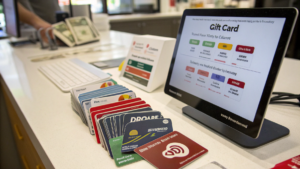Is there a powerbank to charge a laptop?
Running out of laptop power on the go can halt your productivity. Are you tired of searching for outlets, feeling tethered to a wall? What if you could work from anywhere, unplugged?
Yes, there are powerful power banks specifically designed to charge laptops. These modern portable chargers use technologies like USB-C Power Delivery (PD) and offer high wattage outputs to meet the significant power demands of laptops, enabling true mobile productivity.

The short answer is yes—but the real question is: which power banks truly meet the demands of modern laptops, and what does this say about the direction of mobile productivity? Over the past decade, the humble power bank has evolved from a pocket-sized phone charger to a portable energy hub capable of powering full-fledged laptops. This shift isn't just a matter of increased capacity (think 20,000mAh and up), but of smarter engineering—specifically, the integration of USB-C Power Delivery (PD) and high-wattage outputs (often 60W, 100W, or more). What we're witnessing is the convergence of mobility and computing in a way that blurs the lines between being "plugged in" and truly free.
Is it safe to use a Powerbank on a laptop?
Are you worried about damaging your expensive laptop with the wrong power bank? Many people fear incompatible chargers might harm their devices. Is there a safe way to keep your laptop powered on the go?
Yes, it is generally safe to use a power bank on a laptop, provided you choose a power bank with the correct specifications, such as USB-C Power Delivery (PD) and adequate wattage output. Reputable brands also include safety features like overcharge and thermal protection, ensuring safe operation.

I’ve personally seen the fear some users have when it comes to charging expensive electronics with portable power. This is understandable. When I first started in the printing industry, quality control was everything. A small error could ruin an entire batch. This taught me that attention to detail in production is crucial. The same applies to electronics. Not all power banks are created equal. Compatibility, voltage regulation, thermal protection, and battery quality matter just as much as capacity. Brands that optimize for laptop charging—like Anker, Zendure, or Baseus—understand that reliability under load is non-negotiable. This is where informed consumers must look past marketing and understand specs like PD 3.0 support, GaN technology, or pass-through charging.
What are the key safety features to look for in a power bank?
When choosing a power bank for your laptop, safety features are paramount. First, look for a power bank with Power Delivery (PD) support. This ensures that the power bank and your laptop can communicate to deliver the correct voltage and current, preventing overcharging or undercharging. Second, check for wattage output. Your power bank's wattage should match or exceed your laptop's charging requirements for efficient and safe charging. Third, reputable power banks include multiple layers of protection. This includes overcharge protection1, which prevents the battery from being charged beyond its capacity, and over-discharge protection, which stops the battery from completely draining, prolonging its lifespan. Short-circuit protection is also vital; it prevents damage from electrical faults. Finally, thermal protection manages the power bank's temperature during charging and discharging, preventing overheating. These features ensure both your power bank and your laptop remain safe during use.
| Safety Feature | Description | Benefit for Laptop Charging |
|---|---|---|
| Power Delivery (PD) | Enables smart voltage and current negotiation between devices. | Prevents overcharging/undercharging, optimizes power. |
| Overcharge Protection | Stops charging once the battery reaches full capacity. | Extends battery lifespan, prevents swelling. |
| Over-discharge Protection | Prevents the battery from completely draining. | Protects battery health, prevents deep discharge damage. |
| Short-circuit Protection | Automatically cuts power in case of a short circuit. | Prevents electrical damage to devices. |
| Thermal Protection | Monitors and regulates the power bank's operating temperature. | Prevents overheating, ensures safe operation. |
How can I charge my laptop without a charger?
Stuck with a dead laptop and no charger in sight? Many of us face this dilemma when traveling or working remotely. What options do you have when the wall outlet is out of reach?
You can charge your laptop without its traditional charger primarily by using a high-capacity power bank with USB-C Power Delivery (PD) capabilities. Other methods include car chargers with appropriate adapters, portable solar chargers, or even another laptop or device with reverse charging capabilities, though power banks are the most common and efficient solution.

There have been countless times I’ve been out, perhaps meeting clients or visiting production sites, and found myself low on laptop battery. In the past, this meant frantically searching for a cafe with an available outlet. But here’s the deeper insight: a power bank that charges a laptop is no longer just a gadget—it’s an enabler of a new work culture. Remote workers, digital nomads, and even field professionals are no longer tethered to walls or power sockets. This is more than convenience; it's a shift in autonomy and control over one's digital life. When energy becomes portable, so does productivity. I have personally relied on powerful portable chargers to keep my work flowing seamlessly, proving that mobility doesn't have to sacrifice productivity.
What are the best alternative charging methods for laptops?
The most reliable alternative is a high-wattage power bank2 equipped with USB-C Power Delivery (PD). This ensures your laptop receives sufficient power. Look for power banks with outputs of 60W, 100W, or even more, depending on your laptop's requirements. Another option for those on the go is a car charger. Many modern cars have USB-C ports with PD, or you can use a car adapter that plugs into your cigarette lighter socket and offers a high-wattage USB-C PD output. For outdoor enthusiasts or those completely off-grid, portable solar chargers can provide power, though they are often slower and dependent on sunlight. Lastly, some advanced laptops or devices support reverse charging through their USB-C ports, allowing them to share power with another device, but this is less common for full laptop charging. The most practical and portable solution remains the dedicated laptop power bank.
| Method | Description | Pros | Cons |
|---|---|---|---|
| USB-C PD Power Bank | Portable battery pack with high wattage USB-C Power Delivery output. | Highly portable, widely compatible, efficient. | Capacity and wattage vary, can be expensive for high-end models. |
| Car Charger (with PD) | Adapter that plugs into a car's cigarette lighter or USB-C port. | Good for road trips, utilizes existing vehicle power. | Requires a car, power output may be limited depending on car's port. |
| Portable Solar Charger | Foldable solar panels that convert sunlight into electrical energy. | Eco-friendly, ideal for off-grid situations. | Slow charging, dependent on sunlight, less reliable power. |
| Laptop/Device Reverse Charging | Using another compatible laptop or large device to charge yours. | Convenient if another device is available. | Requires specific hardware, drains the power of the charging device. |
| Universal Laptop Adapter | An adapter with interchangeable tips and adjustable voltage settings. | Versatile for various laptop brands. | Can be bulky, requires correct voltage setting, older technology. |
How do you power a dead laptop battery?
Facing a completely dead laptop battery can be frustrating, especially when urgent work calls. What steps can you take to revive your device when it's utterly drained?
To power a dead laptop battery, the most effective method is to use a high-wattage power bank with USB-C Power Delivery (PD)3 or to connect it directly to its original charger and a reliable wall outlet. For safety, ensure the charging source provides sufficient power to initiate the charging process.

I've been in that exact situation—a dead laptop, critical emails waiting, and no traditional power source. It feels like hitting a brick wall. This experience reinforces my belief in mobile energy solutions. When Latitude was founded, it was about empowering businesses with meaningful gifts. But truly, it's about empowering people. When energy becomes portable, so does productivity. The question isn’t merely "Is there a power bank that can charge a laptop?"—the better question is: "What kind of mobile future are we building, now that there is?" Being prepared for a dead battery means having the right tools, whether it’s a powerful power bank or understanding how to troubleshoot.
What are the steps to safely revive a dead laptop battery?
When your laptop battery is completely dead, the first step is to connect it to a reliable power source. The most common and effective way is using your laptop's original charger plugged into a wall outlet. Ensure the outlet is working. If using a power bank, make sure it has sufficient capacity and a high enough wattage output (e.g., 60W or 100W via USB-C PD) to initiate charging for your specific laptop model. Some laptops require a minimum power threshold to even begin charging when completely depleted. Once connected, allow your laptop to charge for at least 15-30 minutes before attempting to power it on. This gives the battery enough juice to get past the initial power-on cycle. If the laptop still does not turn on, try a hard reset by disconnecting all power sources, removing the battery (if removable), holding the power button for 15-30 seconds, then reconnecting everything. If issues persist, it might indicate a deeper problem with the battery or charging port.
| Step | Description | Rationale |
|---|---|---|
| 1. Use a Reliable Power Source | Connect to original charger/wall outlet or high-wattage USB-C PD power bank. | Ensures adequate and stable power delivery to initiate charging. |
| 2. Allow Initial Charge Time | Let the laptop charge for 15-30 minutes before powering on. | Provides enough power for the system to boot up. |
| 3. Perform a Hard Reset (if needed) | Disconnect power, remove battery (if possible), hold power button for 15-30 sec. | Clears residual charge and resets hardware components. |
| 4. Check Charging Indicators | Observe LED lights on laptop/charger for charging status. | Confirms power flow and battery receiving charge. |
| 5. Test with Different Outlet/Cable | Try another wall outlet or a different, compatible USB-C cable/adapter. | Rules out issues with the power source or accessories. |
| 6. Monitor for Overheating | Feel the laptop and charger for excessive heat during charging. | Indicates potential issues with components or charging. |
Conclusion
Yes, modern power banks can charge laptops, offering critical mobility. They are safe with proper specs and provide vital alternatives to traditional chargers, empowering productivity on the go.
-
Overcharge protection is vital for battery safety. Discover how it works and why it's essential for your devices by checking this resource. ↩
-
Finding the right high-wattage power bank can enhance your laptop's portability. Explore options to ensure you choose the best one for your needs. ↩
-
Understanding USB-C Power Delivery is crucial for safe and efficient laptop charging. Explore this link to learn more about its benefits and applications. ↩





